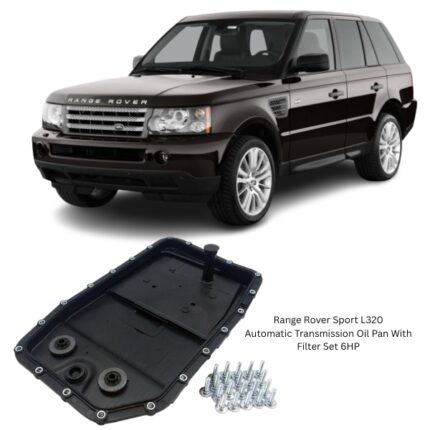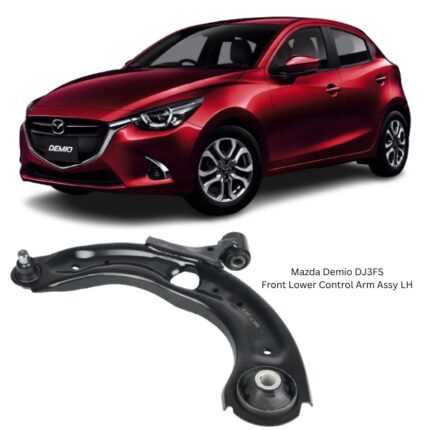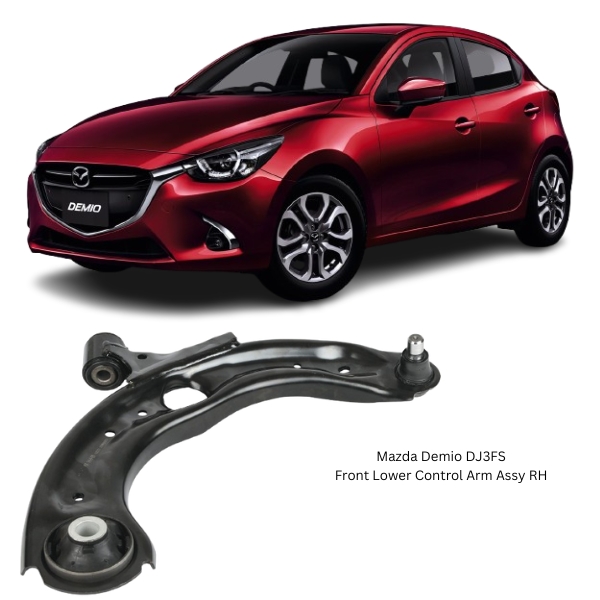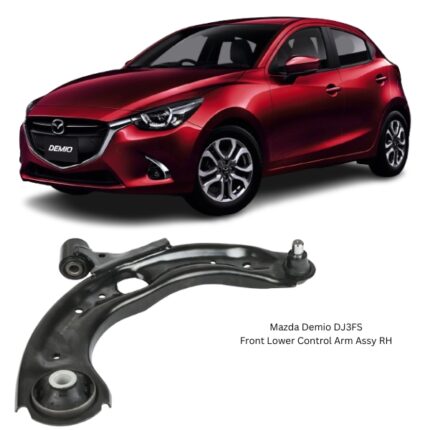Get Mazda Demio DJ3FS Front Lower Control Arm Assy RH DA7H-34-300B in Kenya
The Front Lower Control Arm Assembly RH (Right-Hand) is an integral component of a vehicle’s front suspension system. Positioned on the passenger side of the front axle, it connects the vehicle’s chassis or subframe to the wheel hub or steering knuckle. This assembly allows for controlled, stable wheel movement in response to road conditions and driver inputs. It also plays a critical role in maintaining alignment geometry and ensuring safe and comfortable vehicle operation.
Understanding its structure, function, failure symptoms, and maintenance is essential for mechanics, vehicle owners, and automotive professionals who aim to ensure optimal suspension performance.
1. What Is the Front Lower Control Arm Assembly RH?
The Front Lower Control Arm Assembly RH is a triangular or L-shaped suspension link that forms the lower connection between the front-right wheel assembly and the chassis. It is a pivoting arm that facilitates up-and-down motion of the suspension while holding the wheel in a fixed position front-to-back and side-to-side.
The assembly generally includes:
-
The arm itself (typically made from forged steel, aluminum, or cast iron),
-
One or more bushings at the inner (chassis) mounting points,
-
A ball joint at the outer (knuckle) end, and
-
Occasionally a bracket or mount for the stabilizer (sway) bar link.
Its main purpose is to support the wheel and maintain alignment during movement while absorbing road shocks and controlling wheel trajectory.
2. Key Components
a) Arm Structure
-
Engineered for strength and durability.
-
Shape and length are precisely designed to match suspension geometry.
b) Bushings
-
Typically made from rubber or polyurethane.
-
Allow pivoting motion and absorb vibration between the arm and chassis.
c) Ball Joint
-
Connects the outer end of the arm to the steering knuckle.
-
Allows the wheel to move up and down and pivot during steering.
d) Mounting Points
-
Bolt-on or press-in connections to the chassis and knuckle.
-
Must be torqued to manufacturer specifications for safety and performance.
3. Functionality and Importance
The front lower control arm on the RH side serves several essential functions:
a) Controls Suspension Travel
Allows the wheel to move vertically over bumps and potholes while keeping it aligned with the car’s body.
b) Maintains Alignment Geometry
Supports correct camber, caster, and toe angles for improved tire wear and handling.
c) Improves Ride Comfort
The bushings isolate road vibration and harshness from the cabin.
d) Supports Steering and Braking Stability
Ensures the wheel remains planted and stable during aggressive driving, braking, and turning.
4. Differences Between RH and LH Lower Control Arms
Though symmetrical in function, RH (right-hand) and LH (left-hand) control arms are not interchangeable. Key differences include:
-
Ball joint angles and mounting geometry.
-
Bushing orientation.
-
Sway bar link bracket positioning (if present).
Using the wrong side results in poor fitment, incorrect suspension alignment, and unsafe vehicle behavior.
5. Common Materials and Manufacturing Processes
Modern control arms are manufactured using various materials depending on the vehicle application:
-
Steel (Stamped or Forged) – Strong, cost-effective, used in heavy-duty and economy vehicles.
-
Aluminum Alloy – Lightweight, corrosion-resistant, used in performance and luxury cars.
-
Cast Iron – Durable but heavier; less common in modern designs.
Each material is chosen based on durability, performance goals, and manufacturing costs.
6. Symptoms of a Failing Control Arm Assembly RH
Over time and use, control arms wear out, especially the bushings and ball joints. Common signs of failure include:
a) Clunking Noises
Especially when going over bumps or during sharp turns, caused by worn-out bushings or loose ball joints.
b) Poor Handling or Steering Wandering
A failing arm can’t hold alignment angles, leading to imprecise steering or the vehicle pulling to one side.
c) Vibrations
Worn bushings or joints can transmit road vibration to the steering wheel.
d) Uneven Tire Wear
Improper alignment caused by a bent or worn arm can lead to inner or outer tire edge wear.
e) Visible Damage
Cracks, corrosion, or a bent arm should be addressed immediately.
7. Causes of Damage and Wear
-
Normal Wear: Bushings degrade due to exposure to heat, friction, and road debris.
-
Corrosion: In salted or humid environments, rust can compromise metal control arms.
-
Accidents and Impacts: Potholes, curbs, or collisions can bend or fracture the arm.
-
Aging and Mileage: High-mileage vehicles often require suspension overhaul, including control arms.
8. Inspection and Diagnosis
Routine inspections can help prevent suspension failure:
-
Visual Checks: Look for torn bushings, loose ball joints, or bent components.
-
Pry Bar Test: Used to detect excessive play in bushings.
-
Tire Wear Pattern Analysis: Abnormal wear can indicate misalignment due to a bad control arm.
If the arm shows any of these issues, replacement is recommended rather than repair.
9. Replacing the Front Lower Control Arm Assembly RH
Tools Needed:
-
Socket set
-
Wrench set
-
Ball joint separator
-
Torque wrench
-
Floor jack and jack stands
-
Pry bar
Basic Steps:
-
Lift the Vehicle and Remove the Wheel: Securely jack the car and remove the front-right wheel.
-
Disconnect the Ball Joint: Use a separator to free it from the steering knuckle.
-
Unbolt the Arm from the Chassis: Remove bolts holding the control arm bushings.
-
Remove the Arm: Carefully take it out of the suspension assembly.
-
Install New Arm: Position it exactly as the original and torque bolts to manufacturer specs.
-
Reconnect the Ball Joint
-
Reinstall the Wheel and Lower the Car
-
Perform Wheel Alignment: Critical to reset suspension geometry.
Note: Always replace hardware like bolts and nuts if specified by the manufacturer. Torque values vary by vehicle model.
10. Maintenance Tips
-
Check During Routine Service: Inspect the suspension when changing oil or rotating tires.
-
Avoid Harsh Driving: Speeding over speed bumps or potholes can damage suspension parts.
-
Clean Underbody: Wash off salt or mud buildup to prevent corrosion.
-
Use Quality Replacements: Always use OEM or equivalent-grade parts for durability.
11. When to Replace vs. Repair
You should replace the control arm if:
-
Bushings or ball joints are non-serviceable.
-
The arm is bent, cracked, or rusted.
-
There is excessive play or noise.
Some designs allow for bushing or ball joint replacement, but replacing the full assembly ensures proper geometry, safety, and durability.
Follow us on Facebook for more parts.





Reviews
Clear filtersThere are no reviews yet.